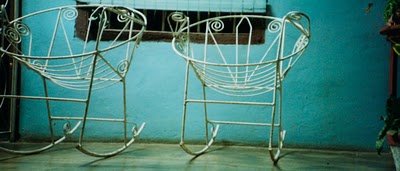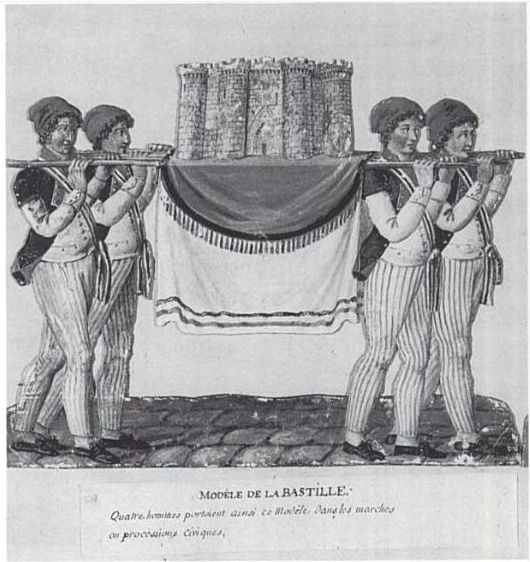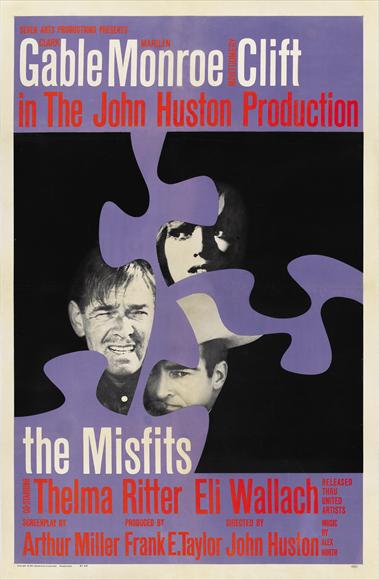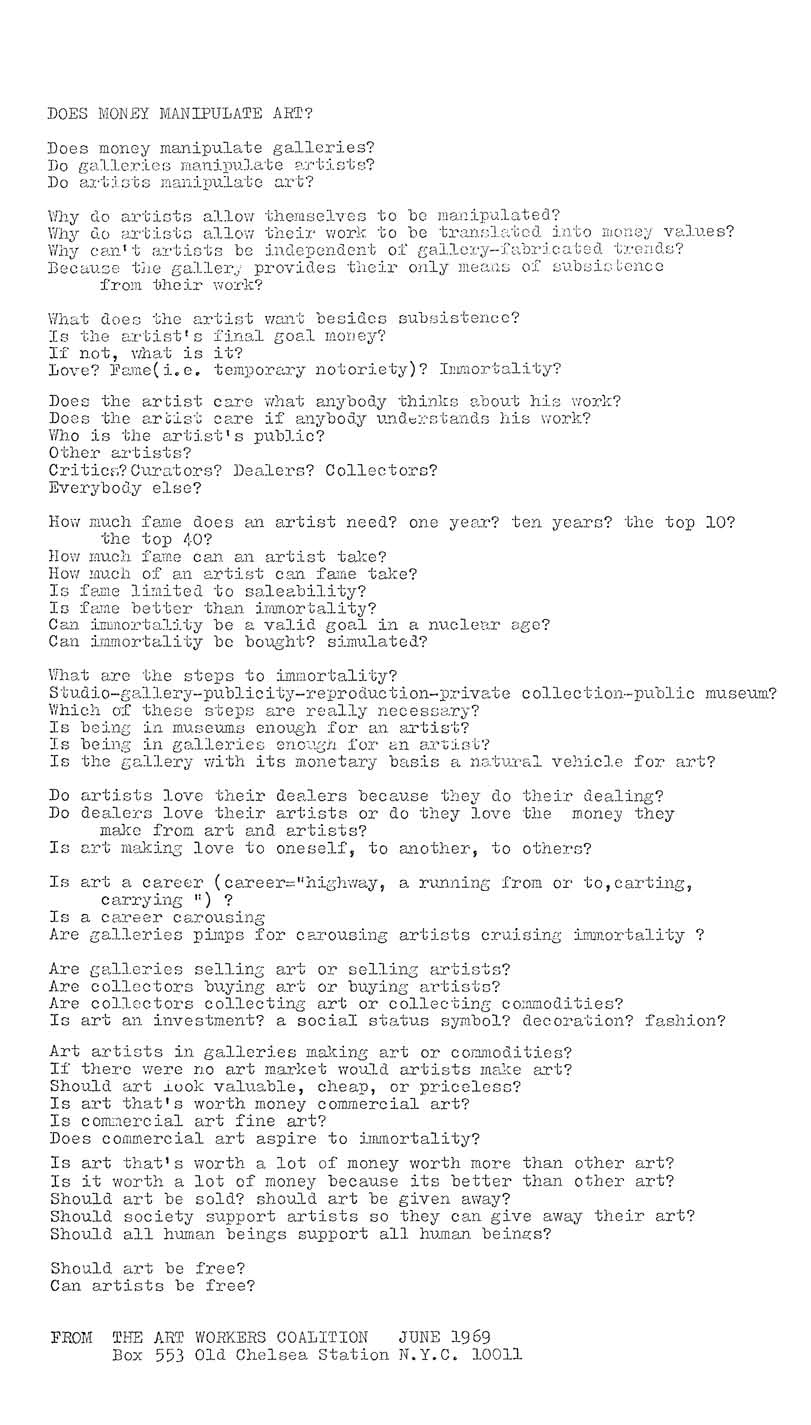Schwarz
View current page
...more recent posts
RIP Leslie Buck, Designer of Iconic Coffee Cup
nice mismatched set of images of brick bbq pit from mixed construction lot
Is the profession of architecture corrupt? According to the definition of “institutional corruption” currently in use at the Center for Ethics at Harvard University, yes.
The Center’s new director, renowned attorney Lawrence Lessig, has defined as “corrupt” organizations that have tragic structural flaws that undermine their own purposes for being. He has recently re-focused the Center’s resources on studying these ineffectual institutions and their corrosive effects.
Now, apply this descriptive framework to the architectural profession. Its purpose for being is to create architecture — that is, to make art out of the science of building. The purpose of this art, if there is one, is often debated but most agree it should engage, if not uplift, the individual mind and body as well as human culture as a whole. What kinds of structural features might be holding back the profession from consistently achieving these results?
watched on hulu: polanski's 1966 cul-de-sac
*recommended
welded shaker look
via adman
La Trufa (truffle) is a small holiday house in the north of Spain, designed by Ensamble Studio
via justin
devo obsesso mucho

welded rebar furniture of cuba
giacometti bronze andirons / 1985 rockefeller copies / 1936 originals 385k
cheep bronze copy statues suitable for the garden
If Frost and Steketee have difficulty constructing a coherent new vision of compulsive hoarding, it is because they are too observant and too dedicated to the relief of suffering to make a complex phenomenon simple. They are collectors in their own right, stocking a cabinet of curiosities with intimate stories and evocative theories. To those who need to understand hoarders, perhaps in their own family, “Stuff” offers perspective. For general readers, it is likely to provide useful stimulus for examining how we form and justify our own attachments to objects.
giant german barrels
large (5' x 5') barrel
kentucky barrels
brass garden taps
DEMAND THE IMPOSSIBLE!
Posters From The 1968 Paris Uprising
'The men are holding back, the men are cowards . . . we will take over'
On 5 October 1789 thousands of Parisian women tramped twelve miles to Versailles to bring the king back to the capital. This event radicalised the French Revolution.

pf palloy and reliques patriotiques
model of the bastille carved from an original stone building block
reflections on violence and the crowd in the images of the french revolution
re purposed stone block from the bastille
more stone remnants
rip dugout dick
Infomab10 is a pavilion designed and built in record time and within record budget. It consists of an off-the-shelf 28m3 glass-fiber reinforced polyester water tank that was intervened. 100 circular perforations allow speckles of natural light to flood the space during the day, whereas during the night they project the internal light towards the outside like a constellation. Two doors allow circulation through the space.
pitchers from milk bottles
instructions for making glasses from wine bottles
bottle cutters
great resource rim smothing and more
bonus link: the secret behind stretchy bottles
pool fountain / pool pumps and filters
dover parksburgh oval tub and pales
achla round tub
behrens galvanized steel washtub
sourcing a square square ash tub in pa
american farmland galvanized oval cattle tank 44-425 gal / round 165, 390, 706 gal TSC
and more at stockyard supply 10' x 2' Round Tank
1117 Gal
213 lbs
348.00
reclaimed wood stories
via vz

Michael Shelly show Includes an interview with Joe South
Dave the Spazz featuring an interview with Tommy James
Stephen Sondheim joins Terry Gross to talk about his 50-year career on the Broadway stage
heres a challenge. need to do a good old fashion "blow up" (6-8' tall) of an image. in the analog age one used an opaque projector or a slide projector. now we are digital and it should be easiest to go digital no? i dont think so, not at these prices! so the efficient approach would be: go to the salvation army and buy a slide projector cheep (hopefully with out too much any distortion) and get digital slides made by these folks.
Making the job particularly complex, Ms. Belloli had more to worry about than just the image of “The Actor.” There was a painting on the back of the canvas, and that had to be considered too.
For years only a few scholars knew that this second painting existed, and they debated among themselves what it could be. Was it a discarded work by Picasso or, as John Richardson, Picasso’s biographer, hoped, the missing 1901 painting titled “Virgin With Golden Hair”? Hubert von Sonnenburg, a former conservator at the Met, hypothesized that perhaps it was a stage decoration by someone else because the canvas was thick, not the fine artist’s weave a painter would normally use.
“The canvas and composition do suggest a work intended as a decoration,” Mr. Tinterow said. “And the colors were particularly theatrical and vivid.”
“The Actor,” made in the winter of 1904-5, dates from a period in Picasso’s life when he was particularly poor, and he often employed whatever canvases or materials he could get his hands on even if they had already been used. He may have tried to obliterate the original composition by painting over it, but X-rays taken at the museum revealed a landscape with stones in a rippled body of water, rocky palisades and a large figure that might have been a female nude, although Mr. Tinterow said it was impossible to determine that with certainty.
The bold, swirling brushstrokes and palette were definitely not Picasso’s. Rather the colors — gold, mauve and cerulean blue — were in keeping with the work of Symbolist painters in Barcelona who appear in caricatures by Picasso. “It could have been done by Isidre Nonell, one of the Symbolist painters who had a studio in Paris and was known to have given Picasso materials in 1901,” Mr. Tinterow said.
Whoever the artist was, the X-rays showed that the landscape was painted horizontally, and that Picasso rotated the canvas for the vertical composition of “The Actor.”
barcode everything
via vz
i caught black and white and gray via netflix roku
very interesting for wagstaffs photo collecting and his role as 'erny 'iggins to mapplethorpes eliza doolittle
highly recommended
rolex learning center lausanne

groovy serge mouille lamps for sale
via justin
black river & western rail road
from my netflix que: the gleaners and i / agnes varda
Mason Hoffenberg Gets in a Few Licks
via justin fb
ben morea e-blast
up against the wall motherfuckers
contemplating monolithic design
via justin
dubble bubble wrapper comix sounds
the grammar of ornament
la la la, la la la
Many critics looked to the formal qualities of the installation for a key to its critical content. Christopher Knight of the Los Angeles Times experienced the densely placed studs as an -imaginary prison- rendering the museum -vaguely but viscerally oppressive- and contradicting the self-representation of museums as free spaces. Roberta Smith, on the other hand, found a -strong pleasure component- in the work. Her review for the New York Times resounds with the language of fiction, describing his interventions as -fabulous tall tales- of -irrational, gargantuan- effort, a kind of -Minimalism gone nuts.- Even Buchloh couldn't resist evoking labyrinths and halls of mirrors in his lecture at SMMoA the day after the opening, describing the project as -mannerist.via gregorg via afc
Right up to the installation of the studs, however, Asher said he didn't know whether people would even be able to get into the space: -These things are up in the air. I have no idea what will happen. If you can enter, you can go back and forth between the small front room and the frames, and cross reference what is in what show. . . . I want to see if the viewer understands this as a sort of abstract sculpture made of frames or something very specific. I am interested in how viewers' comprehension and experience change as they do that cross referencing. It is an operation very few critics appear to have undertaken. But Asher's comments point to another, more basic operation that seems even scarcer in the critical reception of his work: reflection on the process of reception itself.
It's fine to wax allegorical and hermeneutic over the formal and phenomenological effects of material procedures. Opportunity for such effusion is one of the pleasures that great art offers. Alongside accounts of Asher's installation as a prison or a playground, a fable and a folly, I am tempted to describe it as a graveyard of exhibitions past, a kind of institutional crypt, with studs for bones, which renders us ghosts as we pass through walls without surfaces; a hall of mirrors without mirrors, which refracts our vision but offers us no reflection of ourselves. Or perhaps it does, in these symbolic renderings, which are no more than our own projections looking back at us, flattering us with their acuity and erudition. They should be recognized as such and distinguished from Asher's project.
From everything we know about Asher's method, it is quite certain that the aesthetic, symbolic, and even phenomenological qualities that may be associated with the results of procedures he undertook are quite incidental. The specific logic of those results lies not in Asher's choices but in the decisions of the artists, curators, designers, and installers who placed the walls in the shows at SMMoA, and in the conditions that determined those decisions: broadly, the mission and economy of noncollecting contemporary art institutions and their programming of shows and projects. What is to be interpreted in Asher's work are not the formal qualities of the installation but the procedures of which they are the product, as well as the relationship between those procedures and the conditions of the site and situation for which they were undertaken.
The post-studio practice Asher has pursued since the late 1960s has often been characterized by a rigorous site-specificity limited to removing, displacing, reconfiguring, or reproducing existing or once-existing elements of the sites in which he works. Asher, along with Daniel Buren, reinterpreted the site-specific art that had emerged earlier in that decade, developing practices of formal investigation into strategies of critical intervention. The object of their critique, however, was not only the sites of art's presentation but its traditional site of production as well. For it is the studio, and its distance from the gallery and the museum, that dictates the production of transportable and transferable works-discrete objects predisposed if not predestined to circulate as commodities. By closing the gap between sites of production and consumption, site-specificity provided for a direct and potentially critical engagement with the social contexts of art, at the same time that it freed art from the logic of commodity production.
While many artists making site-specific work have also created discrete objects, or packaged documentation, that circulate as commodities, Asher has consistently eschewed all commodity production and exchange. His is not a utopian rejection of economic exchange as such-a gesture which, in a capitalist society, can only be symbolic-but a very practical and specific substitution of one economy for another. What artists receive on sales is not payment for labor but rather a portion of the value to be realized (or not) by the buyer in the market where that value has been (or, it is hoped, will be) established: It is an advance percentage on an anticipated profit. Since the early 1970s, Asher's only compensation for his projects has been in the form of fees. With the development of this fee structure, Asher conclusively redefined his activity, shifting from a model of goods production to a model of what, in economic terms, would be described as service provision: a form of labor that does not fix itself in a vendible commodity and can't be subject to further exchange. However, the most radical feature of Asher's work may be that it is not only site-specific but temporally specific as well. His installations cease to exist after a contractually determined period of time.
Like almost all of Asher's work, the SMMoA installation was destroyed shortly after the show closed in mid-April. All that is left of it now is the exhibition catalogue, installation photographs, and the documents generated over the seven years of the project's development. These will be collected in the museum's archive or in Asher's personal archive.
Asher will probably never be the subject of a museum retrospective. Short of a public presentation of his archive, there would be almost nothing to show of his forty years of work. However, as Smith noted in her New York Times review, at SMMoA he has, in a sense, given a retrospective to a museum. It is a very specific kind of museum, a kunsthalle whose history as a noncollecting institution, like that of Asher himself as an artist, is preserved only in its archive. If there is an allegory to be discovered in Asher's SMMOA installation, it is an allegory of his own practice, the structures of which were materialized at SMMOA through the homologies between that practice's conditions and those of the institution.
FINALLY, EFFORTS TO PIN DOWN the critique of museums and galleries in Asher's various installations broadly miss the point. The clearest and most consistent object of Asher's critical intervention is not the institution of the museum or gallery but that of artistic practice and the symbolic and material economies in which it exists. Asher's masterpiece, his monumental life's work, is his method: the procedures, conditions, and relations of production and distribution he has crafted over the course of forty years of work. His achievement is not that he developed strategies to materialize the invisible and immaterial structures of our material relations in artistic sites. Rather, his achievement is that by eschewing the commodity form, circumscribing the temporality of his interventions, and substituting the economic structures of service provision for those of goods, he established a mode of production that has redefined his place within those structures. If artistic production was long defined as the manipulation of formal elements within a given artistic frame, Asher's innovation is not so much that he shifted the object of that manipulation to the institutional frame, but that he constituted as the object of art the conditions and relations of artistic production itself: not only the positions artists manifest within the frame of their aesthetic systems but the very positions they occupy within the field of art and the economic conditions and social relations that produce those positions-and that artists, in turn, reproduce in their activity. What his work demands is that we consider whether artists fulfill, or fail to fulfill, the claims of their artistic positions on the level of social and economic conditions.
These aspects of Asher's work continue to be elided and even disavowed by art historians and critics. In an apparent effort to disqualify interpretations of Asher's work as a rejection of market relations, Buchloh asserted in his SMMOA lecture that Asher has always been willing to undertake commissions with private collectors-as if the distinction to be made with regard to Asher's work is between public and institutional versus private and individual commissions (if one can even draw a clear line between the two). Rather, what distinguishes Asher's practice is a site-specific mode of production, the results of which cannot be transferred, circulate in a market, or be subject to speculation, either by individual collectors or by museums. In another example, -artist contracts and fees- are listed among the -logistical matters such as travel arrangements- that were edited out of the excerpts from Asher's correspondence with the curators of Skulptur Projekte Mnster published in the journal October last spring. Logistical matters? If we continue to treat the conditions of artistic production as incidental and irrelevant to works of art, then we have learned nothing from Michael Asher.
It is evident today that the barriers that separate the artistic and material dimensions of art, that maintain a distance between the aesthetic or epistemic forms that constitute art's symbolic systems and the practical and economic relations that constitute its social conditions, remain more obstinate than the wall separating the exhibition space and office that Asher removed at Copley Gallery in 1974. The primary site of those barriers, as the reception of Asher's work suggests, may no longer be the physical spaces of art but the discursive spaces of art history and criticism.
I find it extraordinary and deeply symptomatic that critics and historians, even those whose methods are rooted in materialism, will only recognize the material conditions of artworks in the most euphemized ways. When literal investigations of actual physical materials are fastened on as radical figurations of social and even economic critique, as they often have been in writings about Asher, even while the economic conditions of works are ignored, materialist analysis becomes a kind of farce. It must be recognized that the bracketing off of these aspects of art performs a kind of censorship that may do more than the false neutrality of any exhibition space to perpetuate an idealist mythos of artistic autonomy and transcendence, and to provide the arbitrary mechanism of the market with artistic justification.
It may be time to consider this censorship in its psychological as well as sociological dimensions. It is difficult to see the consistent elision of economic conditions of production in the critical evaluation of art practices as anything other than a false sublimation of -vulgar- interests in money. With Asher, however, I believe what this censorship effaces is even more fundamental. It amounts to a denial of his monumental sacrifice and the demand it makes on us. What Asher has committed himself to may be the most radical enactment of the ambivalence that underlies avant-garde traditions of artistic negation: a form of artistic suicide enacted and reenacted with the destruction of every new work. Such self-destruction may be the only escape from the art market and its speculative necrophagia, as even the estates of artists such as Lee Lozano and Allan Kaprow are turned over to powerhouse dealers, their radical refusals reduced to symbolic gestures severed from any material stakes with the complicity of an art discourse that refuses to acknowledge such stakes except as symbolic gestures. The remains of Asher's work will not be sacralized in any museum, or valorized at any auction, but buried in our institutional equivalent of Potter's Field: the archive.
Thankfully, there are also books.
In early March, groups of state Bureau of Liquor Control Enforcement officers raided three Philadelphia bars after receiving a complaint that the bars were selling beer that had not been registered for sale in Pennsylvania.
As it turned out, much of the beer that was confiscated in the raids was, in fact, legal, but it did not match the brand names listed on the state’s database. And while the officials from the Pennsylvania Liquor Control Board struggled to clarify the list, outrage over the raids by armed agents grew to the point that the within a week, members of the state House Liquor Control Committee and the state Senate Law and Justice Committee, which oversees liquor law, had scheduled a joint hearing on the raids.
That hearing is on Tuesday in Harrisburg, and it has the potential to be more than a discussion on the raids themselves.
“I think we’re at a point where a number of things could come to a head very soon,” said Lew Bryson, a beer writer based in suburban Philadelphia and a critic of the state’s decades-old liquor laws. “The more I talk to people about the hearing, the more I think this may turn into something broader.”
Faubourg Tremé: The Untold Story of Black New Orleans
fusilli jerry
the hounds on fire again. miami guy wayne cochran and payday. (just added to my netflix cue)
Many impresarios went bankrupt, some more than once, so that a mercantile background and a gambler's instincts were useful. Alessandro Lanari (1787 — 1852) began as the owner of a shop that produced costumes, eliminating the middleman in a series of successful seasons he produced for the Teatro La Pergola, Florence, which saw premieres of the first version of Verdi's Macbeth, two of Bellini's operas and five of Donizetti's, including Lucia di Lammermoor. Domenico Barbaia (1778 — 1841) began as a café waiter and made a fortune at La Scala. Milan, where he was also in charge of the gambling operation and introduced roulette.
The traditional term is still in use in the entertainment industry for a producer of concerts, tours and other events in music, opera, theatre[3] and even rodeo.[4] Significant modern impresarios in the traditional sense include Rudolf Bing, Sergei Diaghilev, Richard D'Oyly Carte, Fortune Gallo, Aaron Richmond, and Sol Hurok.
Big Rig
Feature Film |1:35:12 |
From acclaimed director Doug Pray comes an award winning portrait of modern America as seen through the eyes of long-haul truck drivers, the people who know this country in unimaginable ways.
Delta Urbanism and New Orleans: Before
Before: Environmental Manipulation
Initial analyses characterized the post-Katrina flooding as the result of a levee system overwhelmed by natural forces — a natural disaster. Only later did it become clear that the real cause of the flooding was the inadequacy of the system, which failed due to decades of underfunding, shoddiness, incompetence and/or outdated science. But what allowed the storm surge to get so close to the city in the first place? The answer lies in the relentless human manipulation of the deltaic environment starting in the eighteenth and nineteenth centuries, but mostly occurring during the long twentieth century, from 1890 to 2005.
Modern levee construction and municipal drainage effectively ended the occasional flooding — from river, lake or sky — that frustrated New Orleanians in historical times. [2] These interventions also inadvertently eliminated incoming freshwater and sediment, removed the water component from the soil body, and allowed organic matter to decompose. Fine sand, silt and clay particles settled into the resultant air cavities, compacting the soil and lowering its elevation. The result: soil subsidence.
magnuson kicked off facebook
When Jerry Lewis or Tati “criticize” modern life, they don’t have the complacency, the vulgarity to show us ugly things. What they criticize and, they show as beautiful, as magnificent: they love what they criticize and give it a new beauty. Their critique is only the more forceful. In every modernity and every novelty, you find conformity and creativity; an insipid conformity, but also “a little new music”; something in conformity with the time, but also something untimely – separating the one from the other is the task of those who know how to love, the real destroyers and creators of our day. Good destruction requires love.”
“If you don’t admire something, if you don’t love it, you have no reason to write a word about it. Spinoza or Nietzsche are the philosophers whose critical and destructive powers are without equal, but this power always springs from affirmation, from joy, from a cult of affirmation and joy, from the exigency of life against those who would mutilate and mortify it. For me, that is philosophy itself."
century gothic font cuts printing costs
Mehrzeller, the Multicellular Caravan
danish-furniture
tony paul fireplace collection
Wm. Rietveld Drafting Table shown with Friso Kramer Result Chair
Wm. Rietveld consulted with Friso Kramer on the design of the Table top mechanism to hold the in Top Position. Both with Brown Enameled Frame.
Willem Rietveld "REPLY" Drafting Table with collaborative design by Friso Kramer for Ahrend de Cirkel 1958. These tables were produced in 1962
wheeled fire pit
Beretta70: Roaring Themes from Thrilling Italian Policefilms 1971-80
via bt fb
Thirty feet in the air, held aloft by sturdy steel pillars, are some of Mr. Simpson’s pieces: a team of horses pulling a wagon, a metal man strumming a guitar and an airplane cum rocket ship that might have escaped from an old comic book. They are painted in a dozen colors and festooned with propellers that spin in the breeze. With every gust they creak and whir like some phantasmagoric junkyard band.
And down below, barely distinguishable in the shade of a barnlike building with “Simpson Repair Shop” painted on the front, is a gaunt man with big, gnarled hands bent over some scrap metal. It’s Mr. Simpson himself, a retired farm-equipment repairman who turned 91 in January, and who has hammered from discarded steel and aluminum a long second career as an artist.
luther conover set 3 nesting stools
rickyisms
not work safe
bbc radio 4: my music!
Did you hear the one about the guy who lived in the land of Uz, who was perfect and upright and feared God? His name was Job. In the new movie version, “A Serious Man,” some details have been changed. He’s called Larry Gopnik and he lives in Minnesota, where he teaches physics at a university. When we first meet Larry, in the spring of 1967, his tenure case is pending, his son’s bar mitzvah is approaching, and, as in the original, a lot of bad stuff is about to happen, for no apparent reason.
many grades of moving blankets
rambling hen house design
via justin
Molded fiberglass Screen Room Divider by Don Harvey
USA
1960
Incredible set of white fiberglass screens designed by Don Harvey mainly for public installations. This piece consists of two sections each measuring 50", framed in a steel structure that could be attached to the wall as individual sections or together to form a single dynamic element.
Sculptural Fiberglass Room Divider by Don Harvey
United States
1960's
A freestanding three-dimensional sculptural room divider comprised of overlapping cast fiberglass ovals that creates depth within the panel, the whole raised on a custom rectangular walnut base. By Don Harvey. American, circa 1960.
MURIEL COLEMAN
PACIFICA IRONWORKS
Oxidized steel and solid redwood bookshelf, c. 1940
60" x 69 1/2" x 13"
Auction Date: Sun, April 25, 12PM
Estimate: $1,800 - $2,200
from the new rago modern auction catalog
volvo 240 wagon font
at the morgan library
Palladio and His Legacy: A Transatlantic Journey features thirty-one original Palladio drawings from the Royal Institute of British Architects. These exquisite drawings, which were exhibited only once before in America and never in New York, will be on view to the public for the first time in over thirty years. They are being presented with rare architectural texts to illustrate the journey from Italy to North America of Palladio's design principles of proportion, harmony, and beauty.
Palladio's work has significantly impacted American architecture from colonial times to the present day. Focusing on the artist's original drawings and following the trajectory of his ideas, the show also traces the story of American Palladianism. The drawings are supported by numerous architectural models. Three large examples—the Pantheon, Villa Rotunda, and Jefferson's unrealized design for the White House—programmatically illustrate the journey from Rome to America. Smaller models along with rare architectural texts and pattern books, through which Palladio's ideas were primarily transmitted, reinforce the themes of the exhibition.
st ants / hurley
jersey city hard-ass basket ball coach makes it big
a hound on fire
albert ayler the psychedelic boogaloo years
inventing punk
faking places
In 1938, not long after he began work on a master plan for Florida Southern College’s campus, the architect Frank Lloyd Wright sketched a series of small homes for faculty members. Wright and Ludd M. Spivey, Florida Southern’s president, hoped to build as many as 20 houses, but money for them never materialized. The house plans ended up gathering dust while the college built a library, two chapels, administrative offices, a series of academic buildings, and a huge fountain to Wright’s striking designs. In fact, the college has the largest single collection of Wright buildings anywhere.
Now Florida Southern, located in Lakeland, is finally gearing up to build one of the Wright houses. According to M. Jeffrey Baker, a partner in Mesick Cohen Wilson Baker Architects who has been helping the college restore its other Wright buildings, the house will be a flat-roofed, two-bedroom home with walls made of the same custom-cast blocks that Wright used throughout the campus. A cantilevered carport will mark the entrance, and floor-to-ceiling glass windows will open to the outdoors from the living room and the bedrooms. "You can open this house up like a pavilion," Mr. Baker says, to take advantage of the patio and good weather.
the abc's of dada 1/3
Design Blogs: The Vacuum of Enthusiasm
less stuff
nana wall
via ree

